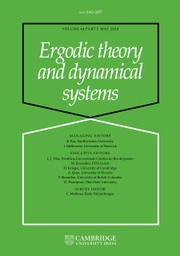No CrossRef data available.
Article contents
Transitive mappings on the Cantor fan
Published online by Cambridge University Press: 24 February 2025
Abstract
Many continua that admit a transitive homeomorphism may be found in the literature. The circle is probably the simplest non-degenerate continuum that admits such a homeomorphism. However, most of the known examples of such continua have a complicated topological structure. For example, they are indecomposable (such as the pseudo-arc or the Knaster bucket-handle continuum), or they are not indecomposable but have some other complicated topological structure, such as a dense set of ramification points (such as the Sierpiński carpet) or a dense set of end-points (such as the Lelek fan). In this paper, we continue our mission of finding continua with simpler topological structures that admit a transitive homeomorphism. We construct a transitive homeomorphism on the Cantor fan. In our approach, we use two different techniques, each of them giving two constructions of a transitive homeomorphism on the Cantor fan: one technique using quotient spaces of products of compact metric spaces and Cantor sets, and one using Mahavier products of closed relations on compact metric spaces. We also demonstrate how our technique using Mahavier products of closed relations may be used to construct a transitive function f on a Cantor fan X such that  $\varprojlim (X,f)$ is a Lelek fan.
$\varprojlim (X,f)$ is a Lelek fan.
MSC classification
Information
- Type
- Original Article
- Information
- Copyright
- © The Author(s), 2025. Published by Cambridge University Press


